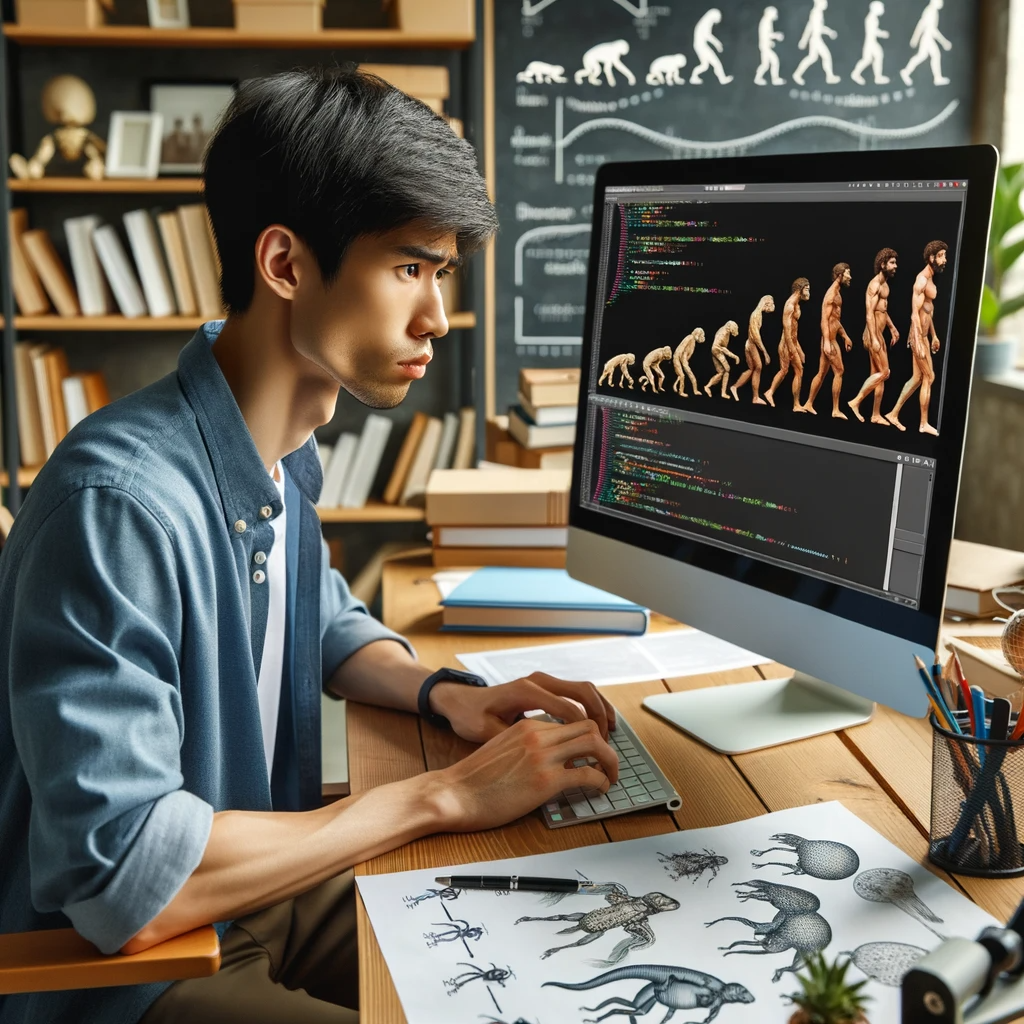Personal reflection to Design Games for Learning Course

(Fig. Personal Reflection. Created by Yupei and ChatGPT. )
The most insightful thing I got from this course
The Designing Games for Learning course started from introducing James Paul Gee’s 13 learning principles that games can teach us how to teach, and ended back to reflect on the 13 principles. This was not a simple loop, but an iterative process with constructive learning, peer reviewing, insightful feedback and forever tuning….
Just like Carla Arena concluded on his blog(Why Game Based Learning Will Make Your Child Smarter?, 2020) about James Paul Gee’s 13 learning principles that games can teach us, “Teaching should be designing and resourcing learning for people. So, teaching and gaming are closely related. The question for teachers is ,”How do we design learning? What tools do we use? Games is one of those tools. They have a lot to teach us of what good learning design is all about.”
There were many takeaways from this course I can use in my future instruction design, and the most insightful is keeping the 13 principles in my mind not only for designing serious games, but also in my daily working and life.
What do I still want to know about?
Gamification is a powerful tool for curriculum designers and instructors. One of the ideal goals of the educators is to foster more students to be lifelong learners. When the learners have the ability to transfer their learning content to be interesting and funny like playing games, they would be more able to enjoy their learning. I want to know the answers about how educators can help learners use the gamification competencies in their own self-learning journeys, especially for some challenging learning projects. It’s vital and beneficial for a lifelong learner.
The ins and outs of design?
Design part is amazing and necessary for a game. The impressive and friendly design will bring a harmonious feeling to the learners to engage them deeper in the learning process. Both the Twin game and Construct 3 game designs include the similar design processes, skills and philosophies.
Good design always starts from a good idea, a right starting point. The author of the book The Design of Everyday Things (Norman, 2013), Don Norman said,”In design, the secret to success is to understand what the real problem is.” I can not agree with this more. During the process of designing Twin game and Construct game, the proper instructional content and objectives are more important than the design skills and technologies. Twin engine is more suitable to design story narrative games, and Construct engine will be more helpful to develop 2D interactive games.
Based on a right starting point, the design should be followed by a clear and informative design blueprint. Since I have been learning the basic skills about how to use the game engines, there were a lot of new functions I found I could use in the game engines to fulfill some instructions in different ways, so there were quite a lot of changes in my projects through my learning process. With more understanding about the game engines and tools I can use to create games, the design part will be improved at the same time.
Were you successful in acquiring attributes throughout the training?
I am so happy that I tried a lot in this course. Although there were some aspects I could do better, for example, the Twin game engine and the Construct 3 game engine have potential functions to develop serious games, the limited time pushed me to skip a lot of practice on them. But, I still got more things than I imagined before registering for this course. Beside the solid knowledge and useful skills in this course, I think I got one more view angel from a game designer to observe instructions and games. Based on the training, I can translate my instructional ideas better to the game designers, at the same time, I can provide more possibilities about designing games to tackle some problems for instructors.
Discuss which skills you claimed during your time and how they helped you as you worked through each level
The whole learning process in this course is like playing a game. I have Arch McGee and Dr. Oprean as my game guides. I used Blogs to reflect my learning. The game projects were the milestone in this course. The badge system shows my learning journey more visually. One more important thing for enhancing my skills acquired was the collaboration with Dr. Oprean and Nicholas Rankin at the BIG grant project during the learning journey. Standing at the end of the whole learning journey, I can better understand a paragraph in the book The Gamification of Learning and Instruction (Kapp, 2012), “Gamification has been used to teach everything from psychomotor or physical skills to cognitive skills – and even for influencing attitudes. Gamification can teach memorization to higher order thinking and every cognitive level in between. It can also be used for assessing a learner’s abilities, knowledge, and skills[Gamification of Learning and Instruction]. ” Because I have improved my different types of skills as well, especially for my high order skills.
Among the different higher order skills, thinking strategically about positioning, analyzing opponent strengths and weaknesses, planning how to achieve game goals,and executing those plans is the most important.
Beyond this training, I can use this skill to tackle more challenging problems in my research, learning and ordinary life. I believe all the project developments share the similar process and design principles. Understand better about the resources I have, the skills I mastered, and the goals I want to achieve, then to make a reasonable plan and follow the design plan to finish the projects.
My view toward games for learning and subsequently gamification has changed
My view toward games for learning was changed in this course. Initially, there were a lot of concerns in my mind about using games in my instruction. Since I thought the games were for entertainment, but not for learning. Even though some games contain educational elements, they could have some side-effects for learning. But, I knew there were a type of serious games designed for learning, which were quite different from the commercial games. At the same time, the books The Educator’s Guide to Designing Games and Creative Active – Learning Exercises: The Allure of Play (Bisz et al., 2023) by Joe Bisz and Victoria L. Mondelli and Reality is broken: Why Games Make Us Better and How They Can Change the World (McGonigal, 2011)by Jane McGonigal brought me more information about the possibilities games can do for our life and our future from hand-on games and video games respectively. My attitude to games has changed.
My definition of a serious game now
Serious games are not only an instructional tool for me as an instructor, but also an elegant metaphor to remind me to live a positive and joyful way as a person now. There is a Chinese proverb, “Bitter hard-working is the boat sailing on the endless sea of learning (学海无涯苦作舟).” I was told and trained to bear the difficulties and challenges during the learning process to yield more production. Luckily, learning has been an interesting thing to me, especially for the content I have been interested in. For the challenging part of learning, one way to make the learners feel they are easier is gamification by using serious games. Of course, if the learners can use the serious games to change their learning content and learning methods, that will be fantastic. Recently, especially after learning this course, I think the proverb should be changed a little bit to “Bitterly and hardly to work to build your happy boat, then sail on the endless sea of learning (学海无涯苦做舟)”. If life is a journey, the best strategy is to enjoy the whole process. Just like Sid Meier said, “I think that in life, as in game design, you have to find the fun. There is joy out there waiting to be discovered, but it might not be where you expected.”
References
Norman, D. (2013). The Design Of Everyday Things (Revised edition). Basic Books.
